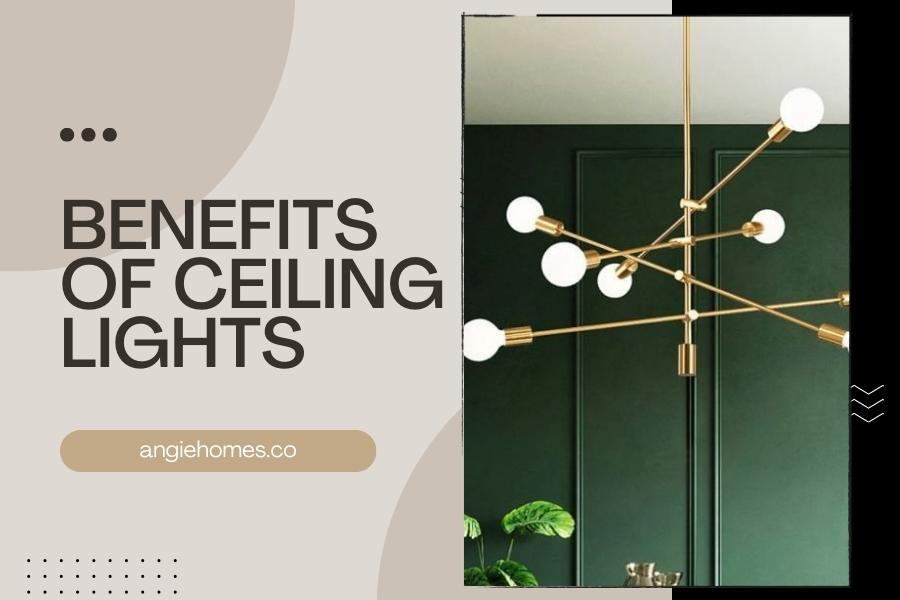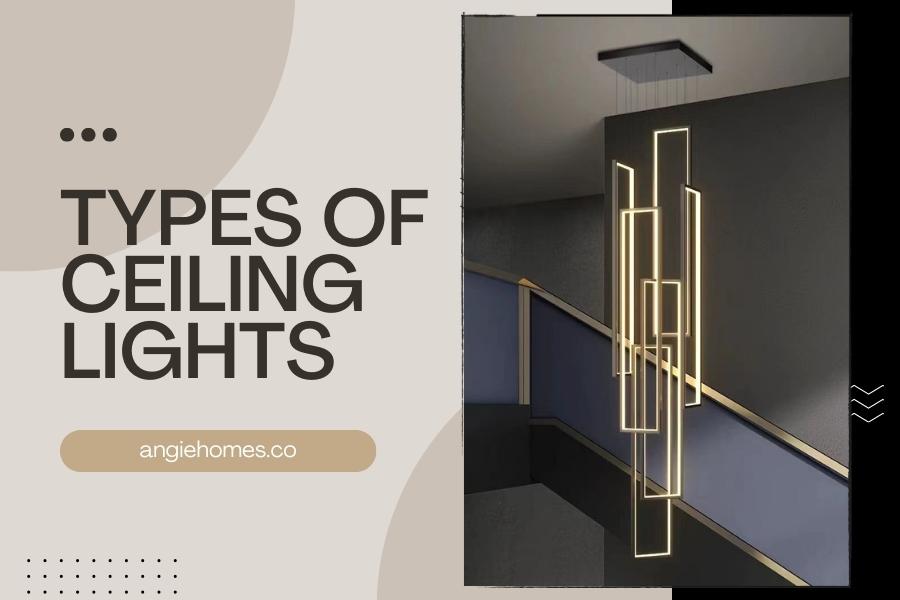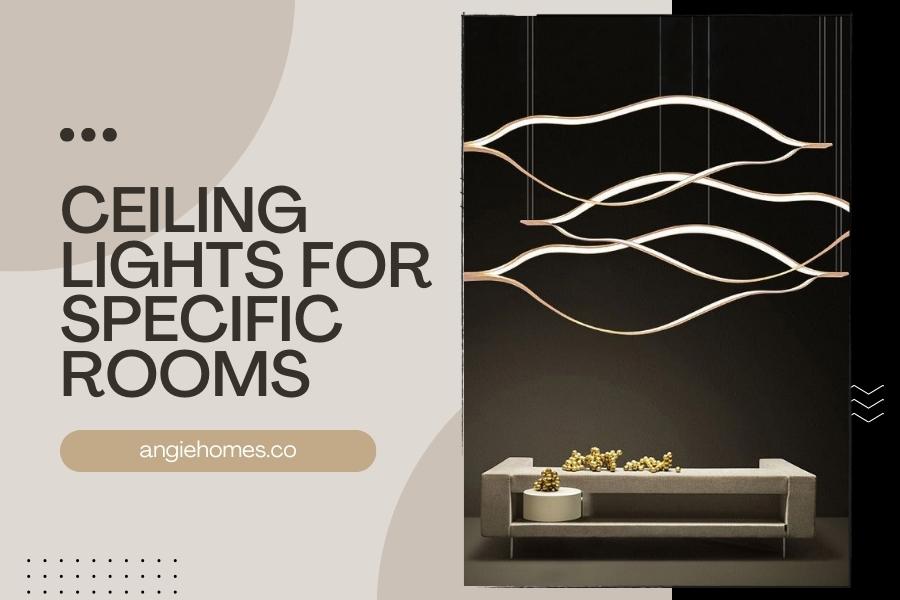Introduction
Ceiling lights play a crucial role in illuminating our living spaces, providing both functionality and aesthetics to our homes. From classic chandeliers to modern recessed lighting, the options are vast and varied. In this comprehensive guide, we will explore the world of ceiling lights, delving into the benefits they offer, the different types available, and how to strategically use
them in specific rooms. Whether you're redesigning your home or simply looking to enhance the lighting in a particular space, this article aims to be your go-to resource on ceiling lights.
What is Ceiling Lights?

Ceiling lights refer to any light fixture that is mounted on the ceiling, providing ambient lighting to a room. These fixtures come in various shapes, sizes, and styles, catering to different tastes and preferences. The primary purpose of ceiling lights is to illuminate the space evenly, ensuring a well-lit and visually appealing environment.
Benefits of Ceiling Lights

Ceiling lights offer a multitude of benefits beyond mere illumination. Here are ten advantages of incorporating ceiling lights into your home:
- Enhanced Visibility: Ceiling lights provide ample illumination, improving visibility in every corner of a room.
- Aesthetic Appeal: Stylish designs and various types of fixtures contribute to the overall aesthetic of your living space.
- Space Enhancement: Well-placed ceiling lights can create an illusion of a larger and more open space.
- Task Lighting: Specific types of ceiling lights, such as spotlights, are ideal for task-oriented activities like reading or cooking.
- Energy Efficiency: Modern ceiling lights, especially those using LED technology, are energy-efficient and environmentally friendly.
- Mood Setting: Different types of lights can create different moods, allowing you to customize the ambiance of a room.
- Versatility: Ceiling lights come in various styles suitable for any room, from traditional chandeliers to sleek recessed lighting.
- Increased Property Value: Well-designed and strategically placed ceiling lights can enhance the overall value of your property.
- Low Maintenance: LED lights, in particular, have a longer lifespan and require less maintenance than traditional bulbs.
- Customization: Ceiling lights can be tailored to fit your interior design preferences, providing a personalized touch to your home.
Types of Ceiling Lights

- Recessed Ceiling Lights: Recessed lights, also known as can lights or downlights, are fixtures installed into the ceiling, creating a seamless and clean look. These lights are versatile and can be used for general illumination or to highlight specific areas within a room. Recessed lights are an excellent choice for modern and minimalist interior
- LED Lights for Homes: LED ceiling lights have revolutionized the lighting industry with their energy efficiency and longevity. These lights consume less energy, emit little heat, and have a lifespan that far exceeds traditional LED ceiling lights come in various styles, making them suitable for both contemporary and traditional settings.
- Flush Lights: Flush lights are mounted close to the ceiling, making them ideal for rooms with low These fixtures provide a clean and unobtrusive look while still offering ample illumination. Flush lights are often chosen for their practicality and ability to seamlessly blend with different interior styles.
- Chandelier Lights: Chandeliers are timeless and elegant fixtures that add a touch of luxury to any room. Traditionally associated with formal dining rooms and entryways, modern chandeliers come in various styles and sizes, making them a versatile choice for different spaces.
- Hanging Lights or Pendant Lights: Hanging lights, also known as pendant lights, are suspended from the ceiling by a cord, chain, or rod. These fixtures can be used individually or in clusters, creating a dramatic focal Pendant lights are popular choices for kitchens, dining areas, and entryways.
Ceiling Lights for Specific Rooms

- Living Room Ceiling Lights: The living room is often the central gathering space in a home, requiring a well-thought-out lighting plan. A combination of ambient, task, and accent lighting, such as a stylish chandelier or strategically placed recessed lights, can enhance the functionality and aesthetics of your living room.
- Ceiling Lights for Hallway: Hallways are transitional spaces that benefit from ceiling lights providing even Flush lights or recessed lights are practical choices for hallways, ensuring a well-lit path and adding a touch of style to these often-overlooked areas.
- Modern Hall Ceiling Lights: For a modern hallway, consider sleek and minimalistic ceiling lights that complement the contemporary design of your LED strip lights or recessed fixtures can create a clean and visually appealing look.
- Dining Room Ceiling Lights: The dining room is a space where lighting plays a crucial role in creating a welcoming and intimate A statement chandelier above the dining table or a series of pendant lights can add drama and elegance to this area.
- Bedroom Ceiling Lights: In the bedroom, a combination of ambient and task lighting is essential. Ceiling light with dimming capabilities can create a cozy and relaxing ambiance, while bedside pendant lights or wall sconces provide focused illumination for
- Ceiling Light for Kitchen: The kitchen requires bright and focused lighting for various tasks such as cooking and food Recessed ceiling lights, pendant lights above the kitchen island, or under-cabinet lighting can contribute to a well-lit and functional kitchen space.
- Ceiling Light for Bathroom: Bathrooms benefit from a combination of general lighting and task lighting, especially around the vanity mirror. Flush lights or recessed ceiling lights are suitable for general illumination, while wall sconces or pendant lights can provide targeted lighting in specific areas.
Types of Ceiling Lights Based on Material

- Glass Ceiling Lights: Glass ceiling lights come in a variety of styles, from intricate stained glass chandeliers to simple and modern glass pendants. The transparency of glass allows for a diffused and soft illumination, adding a touch of sophistication to any room
- Wooden Ceiling Lights: Wooden ceiling lights bring a natural and warm element to interior These fixtures, available in various shapes and finishes, are perfect for creating a cozy and inviting atmosphere in both traditional and contemporary settings.
- Metal Ceiling Light: Metal ceiling light is known for its durability and Whether it's a sleek chrome pendant light or a rustic wrought-iron chandelier, metal fixtures can add an industrial, modern, or vintage flair to your home.
Using spotlights effectively involves careful consideration of placement, purpose, and the desired lighting effect. Follow these steps for optimal spotlight usage:
-
Determine Purpose and Placement
- Identify the specific purpose for the spotlight, whether it's accentuating artwork, highlighting architectural features, or providing task lighting.
- Choose the optimal location for the spotlight based on the intended Consider angles and distances to achieve the desired effect.
-
Select the Right Spotlight
- Choose a spotlight with the appropriate beam angle and wattage for the intended use. Narrow beams are suitable for accent lighting, while wider beams may be preferable for general
-
Install Properly
- Follow manufacturer instructions for Ensure the spotlight is securely mounted and aligned correctly to achieve the desired lighting effect.
- If installing multiple spotlights, maintain consistency in spacing and alignment for a balanced
-
Consider Lighting Design Principles
- Implement principles such as layering light to create depth and visual Combine spotlights with ambient and task lighting for a well-rounded lighting scheme.
-
Use Dimmers:
- Install dimmer switches to adjust the intensity of the This allows for flexibility in creating different moods and adapting to various activities.
-
Experiment with Angles
- Test different angles and orientations to find the most flattering and effective lighting arrangement. This experimentation can help highlight specific features or areas.
-
Regular Maintenance
- Periodically clean spotlights to remove dust and debris that can affect light Check for any loose connections or issues with the fixture.
-
Adapt to Changing Needs
- Be willing to reposition or change spotlights as the room's function or layout This ensures that the lighting remains functional and aesthetically pleasing.
By thoughtfully considering these factors, you can harness the power of spotlights to enhance the overall lighting design in a space, creating both practical and visually appealing illumination.
Conclusion
In conclusion, ceiling lights are more than just functional fixtures—they are essential elements in creating a well-designed and illuminated living space. From the timeless elegance of chandeliers to the modern efficiency of LED lights, the options are vast. Consider the specific needs of each room, your design preferences, and the overall ambiance you want to achieve when choosing ceiling lights for your home. With the right selection and placement, ceiling lights can transform any space into a well-lit, stylish, and inviting environment.
Related Posts :
How To Pair Fabric and Wallpaper : A Comprehensive Guide
Walls That Wow: Enhancing Your Decor with Stylish Wall Sconces
Best Fabrics for Walls : Enhancing Interiors with Style and Texture
How to Cover a Wall With Fabric: Transform Your Space with Angie Homes
Transform Your Space with a DIY Fabric Feature Wall: A Comprehensive Guide
Elegant Walls: A Comprehensive Guide to Fabrics For Wall Decor
The Ultimate Guide to Bedroom Walls: Aesthetic, Decor and Harmony
The Ultimate Guide on Fibre False Ceilings
FAQ's
Q. Can you hang a chandelier from recessed lighting?
Ans: Hanging a chandelier from recessed lighting is not recommended. Recessed lighting is designed to be installed within the ceiling, providing a low-profile lighting solution. It lacks the structural support necessary for a heavy fixture like a chandelier. Instead, chandeliers typically require a dedicated electrical box secured to the ceiling joists to bear the weight. Attempting to hang a chandelier from recessed lighting could compromise the structural integrity of both the fixture and the ceiling.
Q. How do you put a spotlight on a ceiling?
Ans: To install spotlights in a ceiling, first, determine the desired placement. Use a hole saw to create an opening for the spotlight housing. Connect the wiring, secure the fixture in the opening, and adjust the direction of the light. Follow local electrical codes and guidelines during installation to ensure safety.
Q. How do you arrange recessed lighting?
Ans: Arranging recessed lighting involves strategic placement to achieve balanced illumination. Consider the room's size, purpose, and layout. Place fixtures in a grid pattern for even coverage, or focus on key areas like artwork or task areas. Use dimmer switches to control intensity and create ambiance.
Q. What is the difference between can lights and recessed lights?
Ans: Can lights and recessed lights are often used interchangeably. Both terms refer to fixtures installed into a ceiling, leaving only the light's trim visible. The primary difference lies in regional terminology, with "can lights" being a more colloquial term used in some areas.
Q. What is the difference between a chandelier and a hanging light?
Ans: While the terms are sometimes used interchangeably, a chandelier typically refers to a decorative, often ornate, hanging light fixture with multiple arms or branches for holding bulbs. A hanging light, on the other hand, is a broader category encompassing various suspended fixtures, including chandeliers. The key distinction is that chandeliers are a subset of hanging lights, characterized by their specific design and decorative features.
